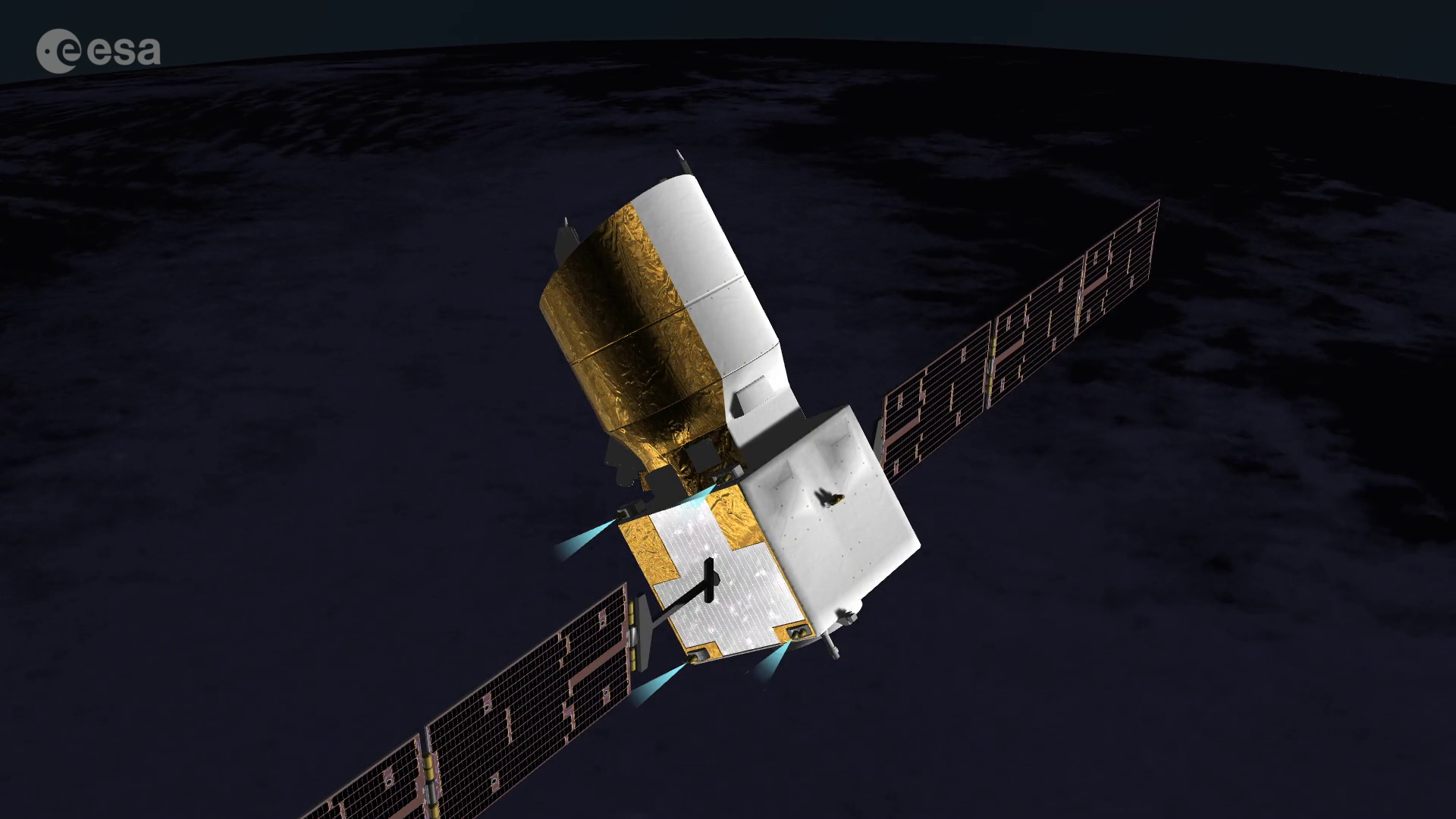Into space and back
Aeolus was taken into orbit on 22 August 2018 on a Vega rocket from Europe’s spaceport in Kourou, French Guiana.
The European Vega is a single-body rocket with three solid-propellant stages and a liquid-propellant upper module for attitude and orbit control, and satellite release.

With a height of 30 m and diameter of 3 m, the launcher can place 300–1500 kg satellites, into the polar and low-Earth orbits used for many scientific and Earth observation missions.
Development of the launcher started in 1998. The first Vega lifted off on 13 February 2012 on a flawless qualification flight from Europe’s Spaceport, where the Ariane 1 launch facilities have been adapted for its use.
The launch site in Kourou lies at latitude 5°3', just over 500 km north of the equator. French Guiana is sparsely populated and 90% of the country is covered by equatorial forests. In addition, there is no risk of cyclones or earthquakes.
In orbit, Aeolus was operated from ESA’s European Spacecraft Operations Centre in Germany.
Exceeding its planned life in orbit and surpassing its scientific expectations, the Aeolus wind mission has been hailed as one of ESA’s most successful Earth observation missions.
Its end will go down in history too with Agency’s mission control team guiding this remarkable satellite down to Earth’s atmosphere for a safe reentry on 28 July 2023.

The reentry came after a series of complex manoeuvres that lowered Aeolus’ orbit from an altitude of 320 km to just 120 km to reenter the atmosphere and burn up.
Crucially, these manoeuvres – the first assisted reentry of its kind – positioned Aeolus so that any pieces that may not have burned up in the atmosphere would fall within the satellite’s planned Atlantic ground tracks.
Today, satellite missions are designed according to regulations that require them to minimise the risk of causing damage on their return to Earth. However, when Aeolus was designed back in the late 1990s no such regulations were in place.
ESA therefore went above and beyond for Aeolus and attempted a new way of assisting its reentry to make it even safer, and it worked.


Access the video














 Germany
Germany
 Austria
Austria
 Belgium
Belgium
 Denmark
Denmark
 Spain
Spain
 Estonia
Estonia
 Finland
Finland
 France
France
 Greece
Greece
 Hungary
Hungary
 Ireland
Ireland
 Italy
Italy
 Luxembourg
Luxembourg
 Norway
Norway
 The Netherlands
The Netherlands
 Poland
Poland
 Portugal
Portugal
 Czechia
Czechia
 Romania
Romania
 United Kingdom
United Kingdom
 Slovenia
Slovenia
 Sweden
Sweden
 Switzerland
Switzerland


































